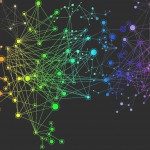Lien vers Pubmed [PMID] – 25437566
Lien DOI – 10.1016/j.celrep.2014.09.042S2211-1247(14)00825-0
Cell Rep 2014 Nov; 9(3): 1135-50
Chaperones are central to the proteostasis network (PN) and safeguard the proteome from misfolding, aggregation, and proteotoxicity. We categorized the human chaperome of 332 genes into network communities using function, localization, interactome, and expression data sets. During human brain aging, expression of 32% of the chaperome, corresponding to ATP-dependent chaperone machines, is repressed, whereas 19.5%, corresponding to ATP-independent chaperones and co-chaperones, are induced. These repression and induction clusters are enhanced in the brains of those with Alzheimer’s, Huntington’s, or Parkinson’s disease. Functional properties of the chaperome were assessed by perturbation in C. elegans and human cell models expressing Aβ, polyglutamine, and Huntingtin. Of 219 C. elegans orthologs, knockdown of 16 enhanced both Aβ and polyQ-associated toxicity. These correspond to 28 human orthologs, of which 52% and 41% are repressed, respectively, in brain aging and disease and 37.5% affected Huntingtin aggregation in human cells. These results identify a critical chaperome subnetwork that functions in aging and disease.


